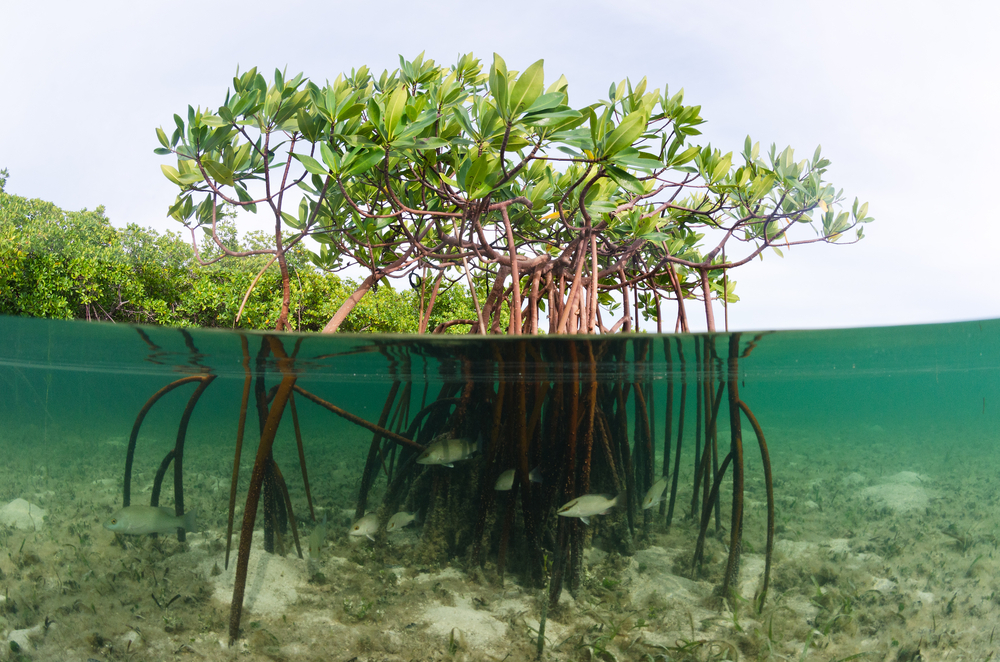
The worst ever recorded incident of mangrove die-off has recently taken place around the Gulf of Carpentaria in northern Australia, with warm waters caused by climate change combined with El Niño to blame for the devastation.
Over 700km of coastline has been affected by the ecological catastrophe, which will have a serious knock-on impact on the region’s wildlife.
The damage has been assessed by Dr Norm Duke, an expert in mangrove ecology from James Cook University, who surveyed the gulf from the air and admits he was ‘shocked’ by what he saw.
‘I work in many places around the world and I look at damaged mangroves as part of my work all the time,’ he told the ABC. ‘These are the most shocking images of dieback I’ve ever seen.’
With the support of the NT Parks and Wildlife Commission, Duke flew in a helicopter between the mouths of the Roper and McArthur River, observing dead mangroves covering a combined area of 10,000 hectares, which makes it the worst mangrove mass die-off seen anywhere in the world. Ever.


The news comes off the back of deeply disturbing studies that recently revealed up to 95% of Great Barrier Reef has been touched by bleaching, also caused by warming waters, and that the same conditions have also killed 100km of important kelp forests off the coast of Western Australia.
Mangroves are not as scenic as the Great Barrier Reef or dramatic as giant kelp forests, but they are an integral and hard-working part of the ecosystem. Duke describes them as being like ‘nature’s kidney’, absorbing 50 times more carbon than tropical forests by area.
Australia is home to seven per cent of the world’s mangroves, which also filter water running off the land and protect the coral reefs lying off-shore, and protect the coastline from storms and tsunamis, which are becoming more common due to climate change.
Duke says the negative impact of this die off will not take long to become evident. ‘There are already anecdotal reports of marine life dying and piles of dead seagrass washing up on the shore,’ he told The Guardian. ‘If that’s true, then turtles and dugongs will be starving in a few months.’
And things would only get worse from there, as the dead mangroves decomposed.
‘The problem is the growth rate isn’t high enough to stabilise the environments. In five or six years’ time, the roots will break down and those sediments will become destabilised. And that will threaten the near-shore habitats of seagrass and coral.’
